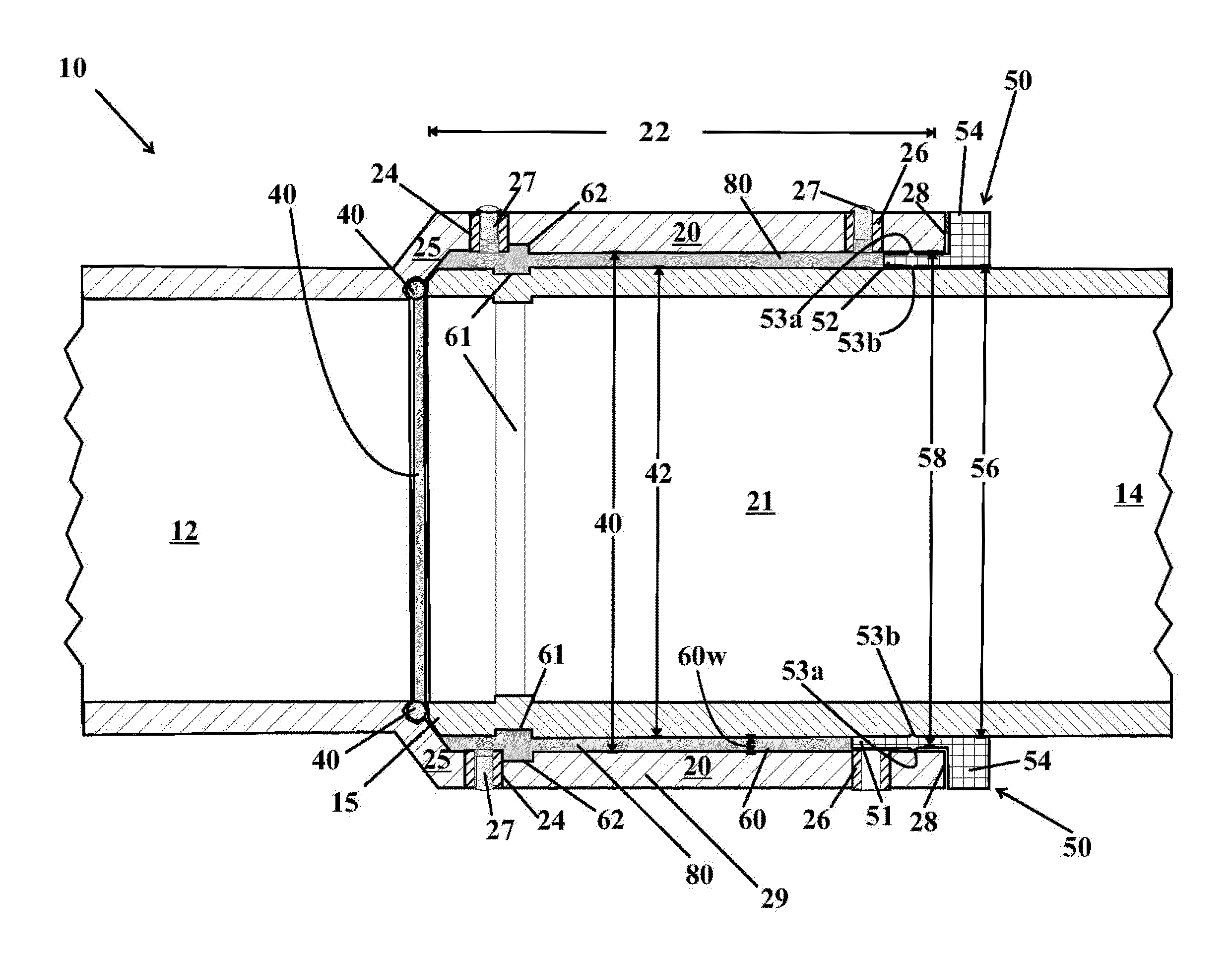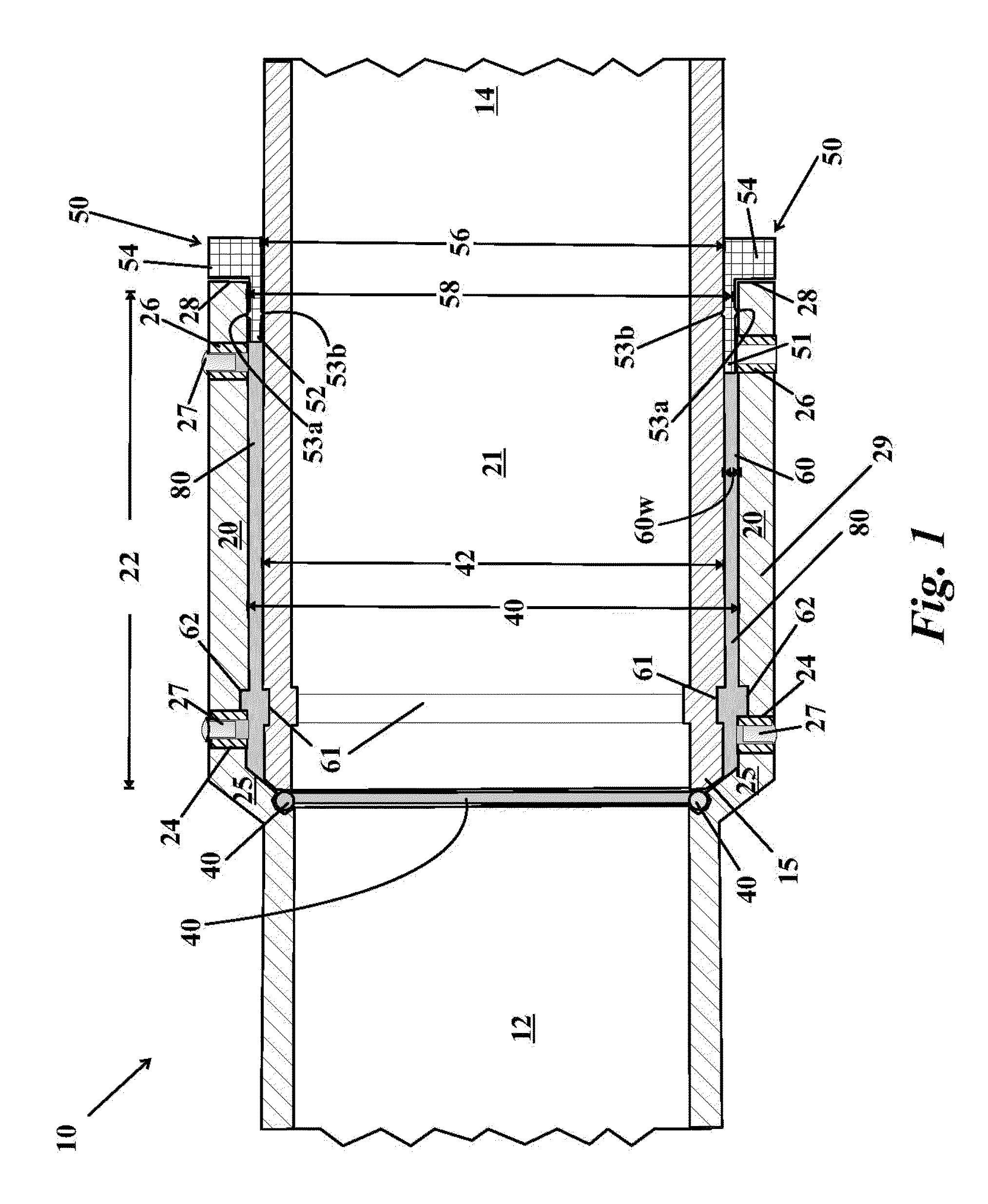Pipe joints
a pipe joint and pipe technology, applied in the direction of hose connection, other domestic objects, mechanical equipment, etc., can solve the problems of unsatisfactory joint bond, potential contamination source, residual adhesive cement not satisfactorily adhering to the two surfaces,
- Summary
- Abstract
- Description
- Claims
- Application Information
AI Technical Summary
Benefits of technology
Problems solved by technology
Method used
Image
Examples
Embodiment Construction
[0042]The invention, as illustrated in the drawings is an adhesively connected pipe joint 10. Referring to the longitudinal cross-sectional view shown in FIG. 1, an illustrated embodiment of the joint 10 has a first pipe 12 with an enlarged end section that is a socket 20. The socket 20 is substantially cylindrical in shape. The socket 20 has a self-centering bottom 25 having a seated gasket / o-ring 40 and an opening mouth having a rim 28. The socket 20 has a length 22 as measured from the rim 28 to the bottom 25, where the bottom is slanted to induce self-centering. The length 22 is substantially a cylindrical wall 29 having elements that determine an adhesive bond line between the socket 20 and a second pipe 14. The socket 20 has a plurality of ports 24,26. Ports closest to the bottom 25 are numbered 24, and ports closest to the rim 28 are numbered 26. As is evident from the drawing, an inside diameter 40 of the socket 20 is greater than the outside diameter 42 of an insertion sect...
PUM
| Property | Measurement | Unit |
|---|---|---|
| angle | aaaaa | aaaaa |
| surface energy | aaaaa | aaaaa |
| surface energy | aaaaa | aaaaa |
Abstract
Description
Claims
Application Information
 Login to View More
Login to View More - R&D
- Intellectual Property
- Life Sciences
- Materials
- Tech Scout
- Unparalleled Data Quality
- Higher Quality Content
- 60% Fewer Hallucinations
Browse by: Latest US Patents, China's latest patents, Technical Efficacy Thesaurus, Application Domain, Technology Topic, Popular Technical Reports.
© 2025 PatSnap. All rights reserved.Legal|Privacy policy|Modern Slavery Act Transparency Statement|Sitemap|About US| Contact US: help@patsnap.com



